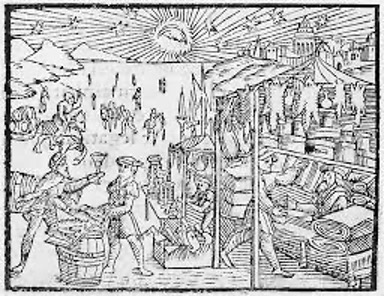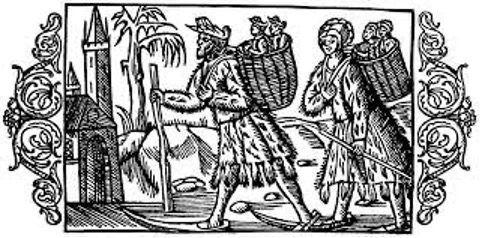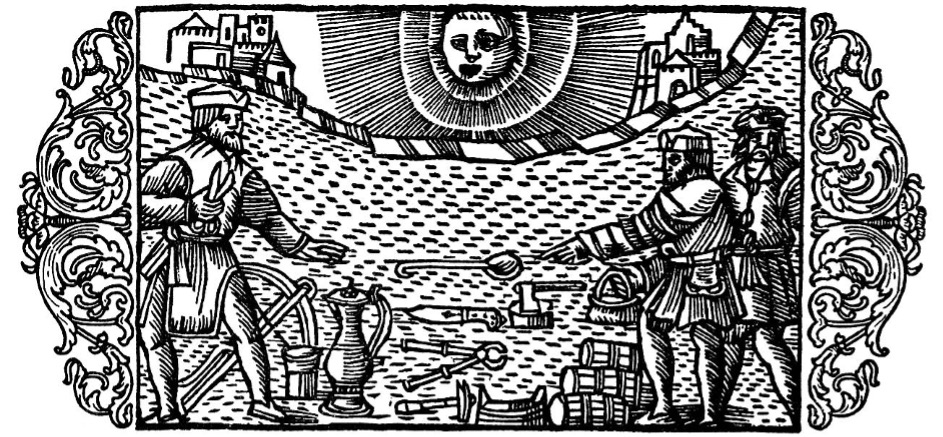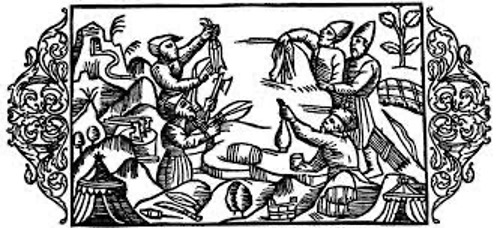Introduction:
In the chronicles, tales of trade routes and bustling marketplaces serve as windows into the past, revealing the intricate web of commerce that connected distant lands and cultures. One such narrative unfolds in the writings of Olaus Magnus, a Swedish historian whose work provides a vivid depiction of Scandinavian and Russian traders engaged in the age-old practice of bartering their wares.

At the heart of these trade networks lay the dynamic relationship between Scandinavian and Russian traders. Stretching across vast distances, from the frigid waters of the Baltic Sea to the bustling markets of Novgorod and beyond, this exchange of goods formed the backbone of regional commerce.
In Olaus Magnus’s accounts, we glimpse the colourful tapestry of goods that traversed these trade routes. Scandinavian merchants, renowned for their craftsmanship and maritime prowess, brought forth a bounty of goods: furs, timber, iron, and salted fish, among others. These commodities, harvested from the rich natural resources of the North, held immense value both within Scandinavia and beyond its borders.
On the other side of the exchange stood the Russian traders, hailing from the bustling city-states that dotted the banks of the Volga and Dnieper rivers. Armed with their own wealth of resources – including grains, honey, wax, and pelts – these merchants journeyed westward, seeking to exchange their goods for the coveted wares of the North.

The exchange of goods between Scandinavian and Russian traders was not merely a matter of commerce; it was a cultural exchange that bridged linguistic and geographical divides. As merchants converged in bustling market towns and trading posts, they brought with them not only their goods but also the customs, traditions, and stories of their homelands.

In the vibrant marketplace, negotiations unfolded in a cacophony of languages – Swedish, Russian, Finnish – as traders haggled over prices and sought to strike advantageous deals. Bartering was not merely a means to an end but a social ritual, steeped in tradition and mutual respect.
Beyond the economic exchange, the interactions between Scandinavian and Russian traders fostered bonds of camaraderie and mutual dependence. In an era marked by political upheaval and territorial strife, the shared pursuit of prosperity served as a unifying force, transcending cultural and political boundaries.
Olaus Magnus’s accounts offer a tantalizing glimpse into a bygone era, where the ebb and flow of commerce shaped the destiny of nations and the course of history. In the bustling marketplaces of medieval Scandinavia and Russia, the spirit of enterprise and exchange thrived, weaving together the fabric of a vibrant and interconnected world.

As we reflect on Olaus Magnus’s writings, we are reminded of the enduring legacy of barter – a timeless pursuit that continues to bind nations and cultures in the pursuit of prosperity and mutual understanding. In the echoes of distant voices and the rustle of traded goods, we find a testament to the enduring power of human connection and the enduring spirit of trade.
Conclusion:
In the words of Olaus Magnus, written centuries ago, we find inspiration and insight into the timeless dance of trade that has shaped our world and continues to shape our shared future.
